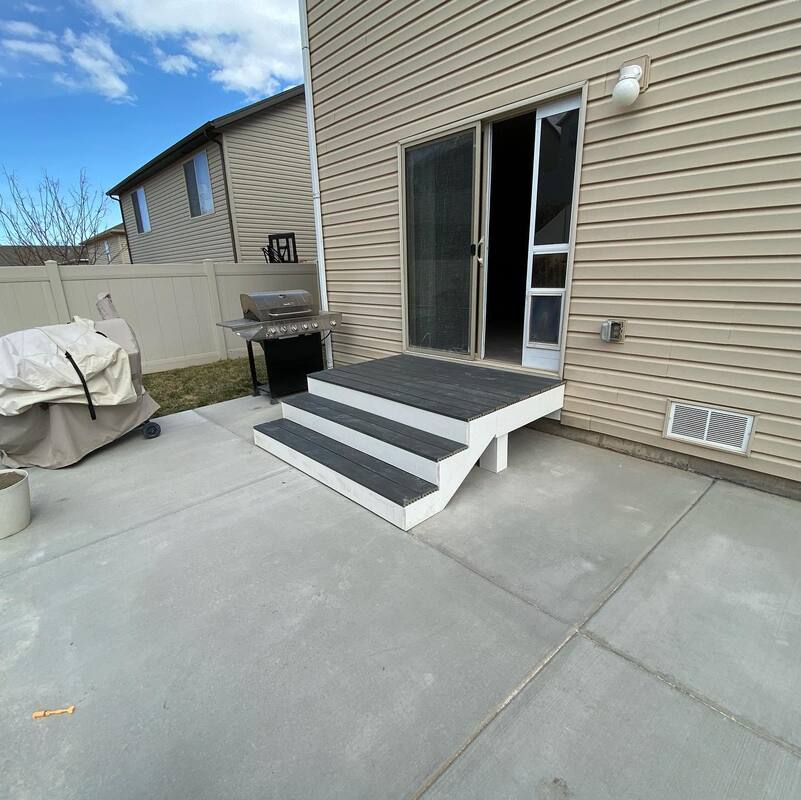Why Concrete Patio CracksConcrete patio cracks form because of several reasons. The main reason concrete patio cracks occur is due to the expansion and contraction of the concrete material. This happens because of changes in temperature and humidity levels. Another common reason for concrete patio cracking is poor construction practices. Other issues include improper mixing and curing of cement and too much water or insufficient water. When building patios, homeowners should ensure they choose a quality brand of concrete. They should also consider professional installation services to reduce the risk of cracking. Various techniques can be employed to prevent concrete patio cracking. One way would be through proper mixed design. If the mixture is designed properly, there won’t be any chance of contracting cracks. Another technique that can be adopted is adding sand to the concrete mix. Sand helps to absorb moisture from the air. When the concrete is exposed to high temperatures, it expands and contracts. Adding sand into the mix reduces this effect. Why Excess Water Cause Concrete CracksWhen installing a concrete patio, homeowners should avoid using excess water. The reason why excess water causes hairline cracks is that the cement reacts with water. As a result, the strength of the concrete decreases. If you want your concrete patio to last long and avoid common issues like water damage, follow the right steps. First, hire a contractor who specializes in concrete patio installations. Second, get an expert to help you choose durable materials for your concrete project. Third, ensure that you follow all the safety precautions before installing. Finally, remember to keep your concrete patio clean and free of debris to maintain structural integrity. How Experts Handle Cracks in Concrete PatioConcrete patio cracks are not easy to fix. It takes time and effort to repair them. However, if you know what to do, you will have no problem fixing them. Here are some tips on how experts handle uneven cracks: Remove the damaged area - You need to remove the cracked part of the concrete. This will make the process easier. Clean up the area - After removing the damaged portion of the concrete, you need to clean up the area. Use a wet sponge to wipe off dirt and grime. Mix the concrete - Once the area has been cleaned, you need to mix the concrete. Ensure that the concrete mix contains enough water, so it doesn’t dry out. Apply the concrete - Once the concrete mix has been prepared, apply it over the entire area where the crack occurs. Ensure that the surface is smooth and level. Wait for the concrete to cure - Let the concrete cure for at least 48 hours. During this period, the concrete will harden. Add texture - Once the concrete has cured, you can add texture to the concrete surface. For example, you can use pebbles or gravel. These materials will give the concrete a more natural look. Seal the concrete - To seal the concrete, you can use a waterproofing product. This will protect the concrete from further damage. Check for cracks again - After applying the waterproofing product, check for cracks again. If there are still cracks, you can repeat step 7. Fix the cracks - If there are still visible cracks after repeating step 7, you can fix them by filling them with epoxy resin. Re-pave the concrete - Once the cracks have been fixed, you can repave the concrete. This will give the concrete a new look. Keep the concrete clean - It is important to keep the concrete clean because dirty concrete may cause other problems. Maintain the concrete - It is important to maintain the concrete regularly. This will help to extend its lifespan. Prevent future cracks - You can install a drainage system if you want to prevent future cracks. This will allow rainwater to drain away. Get professional advice - Before doing anything, get professional advice from a contractor. They will tell you which method works best for your situation. Caulk, Sealants, and Polymer Resin Used in Concrete Patio ProjectsConcrete patio projects are usually done by contractors specializing in these types of work. Caulking is used to seal surface cracks and joints between concrete slabs. It is also used to fill holes and voids in concrete. There are different kinds of caulks available on the market today. Some of them contain polymers, while others do not. Polymeric caulks are more effective than non-polymeric ones. These materials have better resistance against chemical reactions and other substances. They are also resistant to UV rays. However, some people prefer non-polymeric caulks because they are cheaper. Sealant is another important component of concrete patio projects. It is applied over the concrete surface to protect it from dirt and stains. Sealing agents come in various forms, such as liquid, powder, and paste. Liquid sealers are easy to apply but tend to run off easily. Powder sealers are less likely to run off but require special equipment to apply. Paste sealers are thick and sticky. They are ideal for sealing small areas. The type of resin used in concrete patio projects depends on the project requirements. For example, if the area where the concrete will be installed has a lot of traffic, then epoxy resin is recommended. Epoxy resins are strong and durable. They are also flexible and can withstand extreme weather conditions. On the other hand, if the area does not receive heavy foot traffic, then acrylic resin is recommended. Acrylic resins are cheap and easy to use. They are also resistant to heat and cold. The best time to install a new concrete patio is winter. During this season, the ground is frozen and hard. This makes it easier to dig trenches and pour concrete. In addition, the ground is dry, so there is no need to add extra water when pouring the concrete. Smooth Finish on Concrete Driveways and Concrete FloorsA smooth finish is one of the most popular choices among homeowners who want their driveways or floors to look great. A smooth finish is achieved by using a high-quality concrete resurfacing product that contains aggregate. The aggregate helps create a smoother surface.
Two main methods for applying a smooth finish are troweling and floating. Trowling involves a large machine with a rotating blade attached to its front end. The machine moves back and forth across the driveway or floor. As the machine passes over the surface, it scrapes off any loose material. After scraping, the machine applies an even layer of concrete mix onto the driveway or floor. Floating involves spreading a thin layer of concrete mix over the driveway or floor. Then, a roller is rolled over the surface. This creates a smooth finish. If you choose to use floating, make sure to spread enough concrete mix on your driveway or floor. Too little concrete mix may result in uneven surfaces. You can also get the help of concrete experts to execute these steps carefully.
0 Comments
Leave a Reply. |
|

